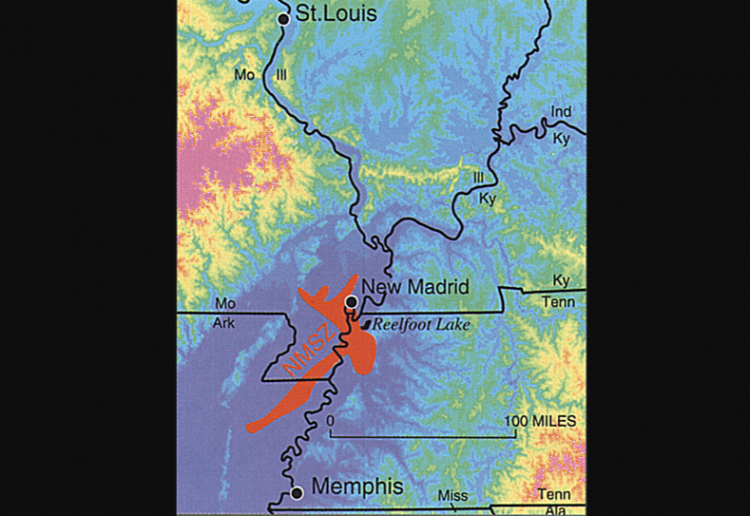A swarm of earthquakes recently struck along the New Madrid fault line in the Midwest, reviving fears among scientists and emergency officials of a potential catastrophic seismic event. This fault line, which traverses Missouri, Arkansas, Tennessee, Kentucky, and Illinois, is one of the most active seismic zones in the United States east of the Rocky Mountains.
Between December 6 and December 11, eight earthquakes were recorded, with magnitudes ranging from 1.8 to 3.0, according to the U.S. Geological Survey (USGS). While minor tremors are common in the region, these quakes underscore the seismic zone's persistent activity and potential for a much larger and more destructive event.
The strongest quake in the series, registering a magnitude of 3.0, struck near Howardville, Missouri, early on December 9. Seven of the quakes were centered in Missouri, while one occurred in Ridgely, Tennessee. Robbie Myers, an emergency coordinator with the Missouri Department of Safety, noted that while the recent quakes are not necessarily indicative of an imminent large earthquake, they serve as a reminder of the region's seismic risk.
"Every year that goes by, the likelihood becomes greater," Myers said, adding that the New Madrid Seismic Zone (NMSZ) is "long overdue" for a major event. The last significant earthquake in the region occurred in 1895 near Charleston, Missouri, with a magnitude of 6.6. Before that, a series of massive quakes between 1811 and 1812, estimated to be between magnitude 7 and 8, caused widespread destruction and dramatically altered the landscape.
Experts warn that another major quake along the New Madrid fault could have devastating consequences, not only for the immediate region but also for the broader United States. A 2004 report by FEMA estimated that a 7.7 magnitude earthquake in the zone could result in $296 billion in damages. The affected area includes major cities such as Memphis, St. Louis, and Little Rock, as well as vital infrastructure like bridges over the Mississippi River, highways, and oil and gas pipelines.
Unlike the earthquakes frequently associated with California's San Andreas Fault, the seismic activity in the central United States poses unique risks. "Due to the nature of the bedrock in the earth's crust in the central United States, earthquakes in this region can shake an area approximately 20 times larger than earthquakes in California," the Missouri Department of Natural Resources stated in a recent report.
Earthquake swarms, like the one observed this week, are characterized by clusters of small to moderate quakes occurring in a short time frame. Scientists are still studying the causes of these swarms, but potential explanations include the gradual release of tectonic stress, subsurface changes, or even magma movement. However, experts emphasize that these swarms do not necessarily precede a major quake.
Brian Houston, director of the University of Missouri Disaster and Community Crisis Center, highlighted the region's vulnerability. "We're overdue for another one," he said, cautioning that a large earthquake could be a multi-billion-dollar catastrophe.
Preparation remains a challenge for states in the New Madrid zone. The infrequent but potentially devastating nature of the earthquakes makes it difficult to maintain public awareness and preparedness. Compounding this issue is the widespread focus on seismic risks in California, which can divert attention and resources away from the Midwest.
USGS coordinator Tom Pratt noted the inherent unpredictability of seismic activity. "As far as we know, there's probably going to be more large earthquakes in the future, but we don't know when because there's no way we can predict earthquakes," Pratt said. While models suggest a recurrence interval of approximately 500 years for large earthquakes in the NMSZ, smaller events could occur at any time.






